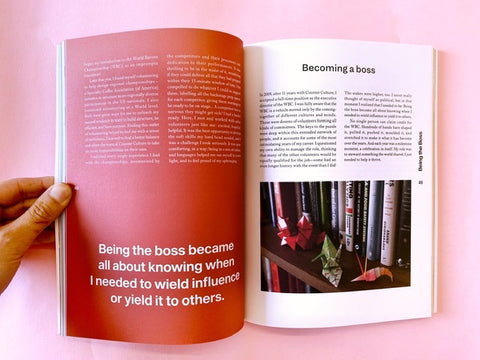Standart: a celebration of the potential of coffee
Light Standard it's like going to your favorite bar and starting a conversation with a stranger that turns out to be unexpectedly pleasant later on.
Standart is a Slovakian magazine dedicated to coffee, made by professionals for those who work in this field or, simply, for those who are passionate about it.
The project explores the beauty and diversity of the drink, with the aim of spreading the culture of the specialty coffee: green coffee of the Arabica variety, roasted in order to best develop its aromatic potential and adequately extracted in compliance with precise rules.

The magazine deals with this topic by building a perfect union between writing and design, addressing contents from all over the world - whether they are historical, sociological, scientific or cultural - and fixing them in a lasting way on paper. Because the universe that hides behind a good coffee should be accessible to anyone.
There are five points of view through which the macrocosm of the drink is observed: coffee (how it is planted, processed, transported and sold), the baristas (and their stories), the ritual, the people and the world, with its cultures and its places. As the magazine points out, coffee is more than just a dark and bitter soup. It is a road through which to explore the fabric of the planet we live on, learn about its cultural diversity and be invested with the curiosity that the latter is capable of stimulating.

The number twenty four takes us by the hand on this journey, confronting us - along 144 pages - with travels, ideas, works of art and people.
In the “Meet Your Barista” section we meet Mikey Rinaldo, a coffee roaster from Chicago, who reveals that he is interested in coffee as a tool for tapping into sensory experiences. As he himself explains, tasting an espresso means learning how to use the sense of smell and train the palate. It is an alternative way to seek creative impulses. However, the creativity it allows is fleeting and lasts as long as the blink of an eye. In fact, there is a very short window of time in which the coffee tastes optimal: it is an instant, before the acids decrease and the bitter taste and astringency increase. Ultimately, however, it is precisely this that gives greater beauty to the moment it is capable of creating.

What's more, coffee isn't just something you drink. It is also the space where you drink it: the café, with a less "f" and acute accent. The experience that surrounds a full cup is also the possibility of experiencing a local, the sense of community that it can offer. Standart then elaborates a theory on cafes as places of perfect distraction. As described in the last issue, these environments provide the right level of background noise that allows us to focus on what is happening around us. Bars are therefore a world in miniature, in which our attention wanders, moving from one attraction to another. Distraction, in the form of a casual "hello" or an unexpected smile, is nothing more than a path to inspiration.
Life in cafes is therefore a distillation of modern life, made more and more of incessant noise and change. According to the magazine, our challenge is only one: to find one's own particular signal in the chaos of everyday life.
We could therefore ask ourselves: what binds us to each other? Cafes invite us to ask ourselves about this too. It is an essential question, when they constitute spaces in which to establish connections that can arise from shared ideas or passions. Since they represent communities capable of uniting the members of a fragmented social order. And they confront us with the question of human bonds in a complex society.

Again, coffee not only unites, but also takes us far. It allows us to travel, to know exotic and distant territories and to explore a different way of life, sip by sip. Here a good coffee can represent the most hedonistic experience of the contemporary world.
In fact, as early as the seventeenth century, the culture of coffee was associated with hedonism and, even more so, with revolutionary ideas. Cafes were meeting places for thinkers, writers and artists, spaces where they simply came together to talk. The drink, in turn, was a favorite of minds engaged in debating important, often countercultural issues. As its popularity grew, the ritual of entertaining around a steaming cup became so widespread that authorities began to believe that excessive debate could lead to radical and potentially dangerous insurrections and exchange of views. For this reason, its consumption was even forbidden and coffee was labeled as an "abominable and pagan liqueur" by religious officials. This helped to combine it with a subversive aspect, an imaginary made up of sleepless nights, secret discussions and mysterious intertwining. Thus, a precise symbolism was combined with it, used to describe specific attributes, also and above all in the world of art. The artistic representation of coffee became particularly frequent starting from the nineteenth century, when it began to be reproduced within the working class, as an emblem of solitude, especially when consumed alone. There are many famous examples: Vincent Van Gogh's “Potato eaters” or Paul Cézanne's “Woman with a coffee pot”. And finally, one of the most iconic American works, Edward Hopper's “The Night Owls”: a representation in which the café embodies the bulwark of solitude, an environment that reminds us that we are all alone, even when surrounded by other people.

Standart is a manifesto on the beauty of coffee, capable of revealing all its expressive possibilities. This is why it talks about something else and teaches us that the aroma contained in a single grain can lead to many places, whether they are physical or mental. Thus, thanks to his articles, we can take a walk around the most visited city in the world, Bangkok, or the slopes of California, reflect on political and controversial issues, or immerse ourselves in the creative fervor that his journalism, deep and attentive, is capable of triggering. Thanks to its editorial and content care, when you have finished leafing through the magazine, you will feel that its pages smell like freshly brewed coffee.
Trovi Standard magazine WHO
